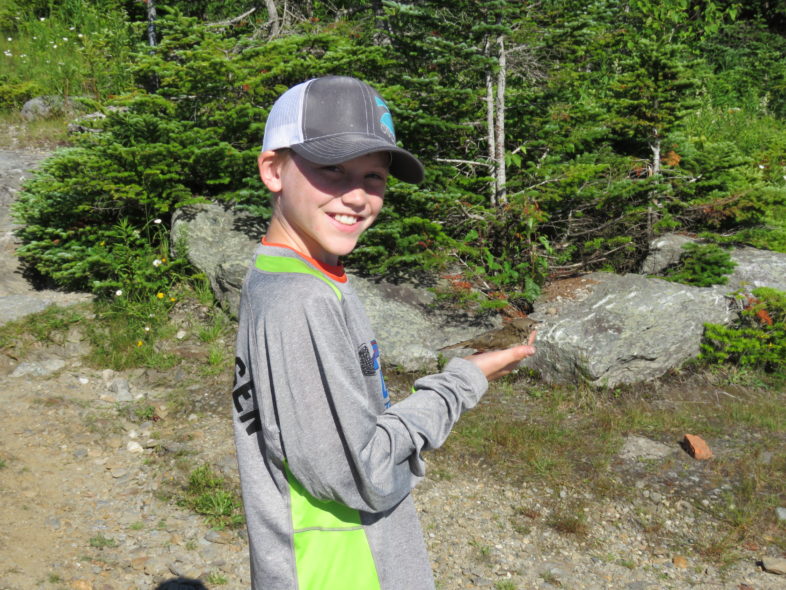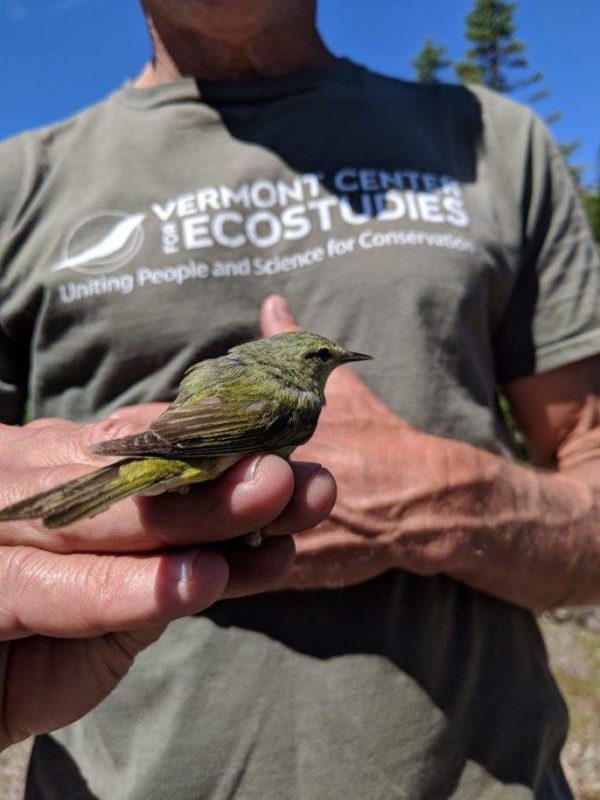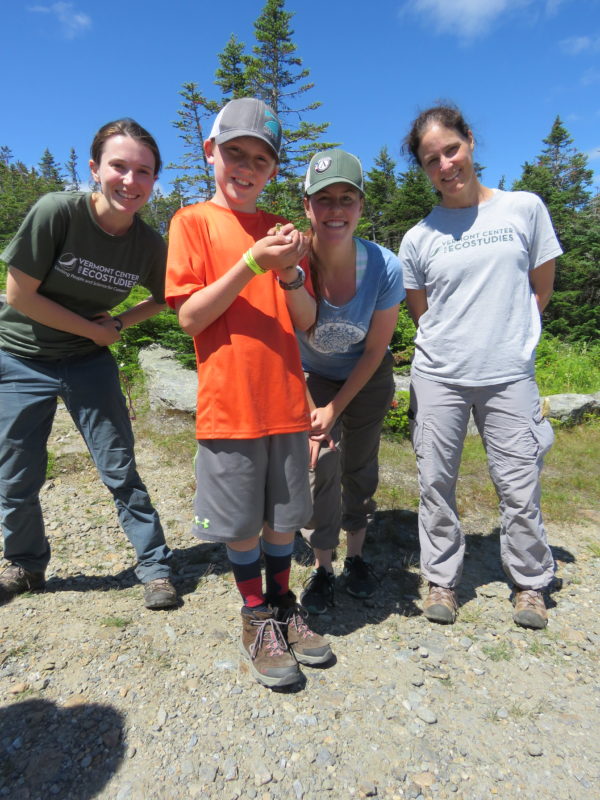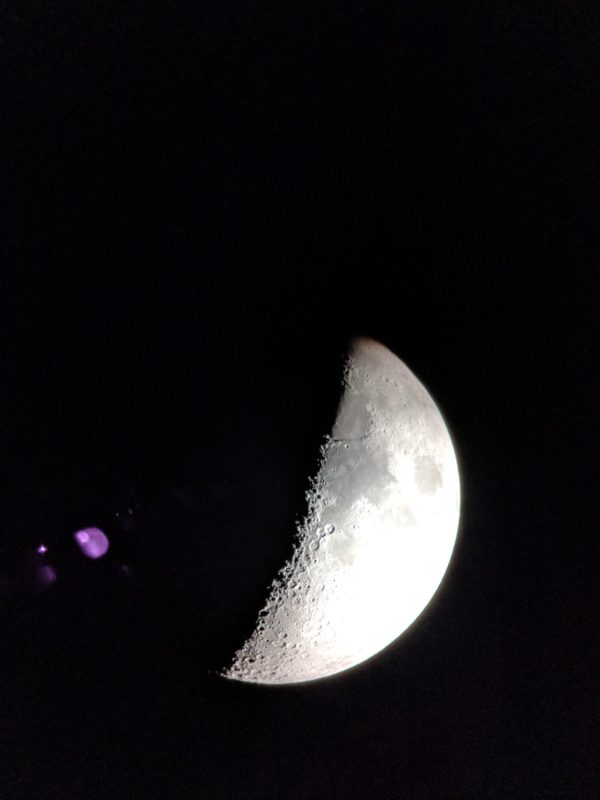
Ty Christensen, another youthful Bird Whisperer, releases a banded Bicknell’s Thrush on Mt. Mansfield, 19 July 2018. Photo by Liza Morse.
Last week’s VCE banding session on Mansfield was notable for how quiet the ridgeline has become, much more so from even a week earlier. Although cool weather may have been partly responsible (temps in mid-40sF early on Thursday), very few songs and calls were heard, with little evidence of the expected family groups or roaming juveniles. Our total capture of 46 birds was the season’s lowest. Several adults of various species were in early stages of flight feather molt, so there may be less local movement occurring now. No siskins or crossbills were observed, and we did not hear a single Purple Finch. One red squirrel was noted, only the third this season.
Our highlight was an adult female Tennessee Warbler, the morning’s final capture. This species is well known to be unusual among long-distance migratory songbirds in undergoing a molt-migration, in which some adults actively molt their flight feathers while migrating. It is thought that many failed or non-breeders depart their boreal breeding grounds early and begin molting at stopover sites, some actually continuing to migrate while in active molt. The female we captured had not yet begun molt, but it’s likely that she will soon, possibly after continuing further south.

An adult female Tennessee Warbler mist-netted on Mt. Mansfield, 19 July 2018. Photo courtesy of Aidan Biglow.
Yellow-bellied Flycatcher — 1 adult female with regressing brood patch
Black-capped Chickadee — 1 hatching-year bird
Red-breasted Nuthatch — 6 (adult male in mid primary molt, 5 free-flying juveniles)
Bicknell’s Thrush — 6 (1 new SY male, 1 return female from 2017, 4 within-season retraps)
American Robin — 1 new adult female
Tennessee Warbler — 1 adult female with regressing brood patch; not yet in flight feather molt.
Blackpoll Warbler — 11 (4 new adults in early primary molt, 2 free-flying juveniles, 5 within-season retraps
Yellow-rumped (Myrtle) Warbler — 7 (4 new adults [3 males, 1 female], 3 free-flying juveniles
Dark-eyed (Slate-colored) Junco — 7 (1 new female, 3 free-flying juveniles, 1 return female from 2017, 2 within-season retraps)
White-throated Sparrow — 3 (all new: adult male and female, free-flying juvenile)
Pine Siskin —1 new free-flying juvenile
Purple Finch — 1 new adult female with regressing brood patch
With two additional banding sessions to come between now and early August,
we expect a resurgence of activity via captures of local hatching-year birds and the
appearance of more non-local, post-breeding dispersers. And, of course, there is bound to
be a surprise or two.

Ty Christensen and three admiring VCE colleagues (from left: Tara Rodkey, Liza Morse, Roz Renfrew) prepare to release a banded female Tennessee Warbler on Mt. Mansfield, 19 July 2018. Photo by Chris Rimmer.
Hands-down, our non-avian highlight of this outing was the spectacular planetary viewing we enjoyed on Tuesday, thanks to friend Ali Wagner’s spotting scope. In addition to the waxing moon, we had exemplary views of adjacent Jupiter and 4 of its moons, Saturn with its clearly visible rings, the orange-red glow of Mars in the east, and gleaming Venus. Another month from now, we’d likely have been hearing nocturnal migrants overhead, winging their way southward!

A digiscoped image of the waxing moon and Jupiter with one of its own prominent moons, as viewed from the Mt. Mansfield ridgeline, 10 pm on 18 July 2018 . Photo courtesy of Aidan Biglow.
